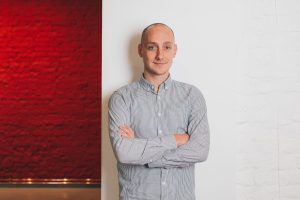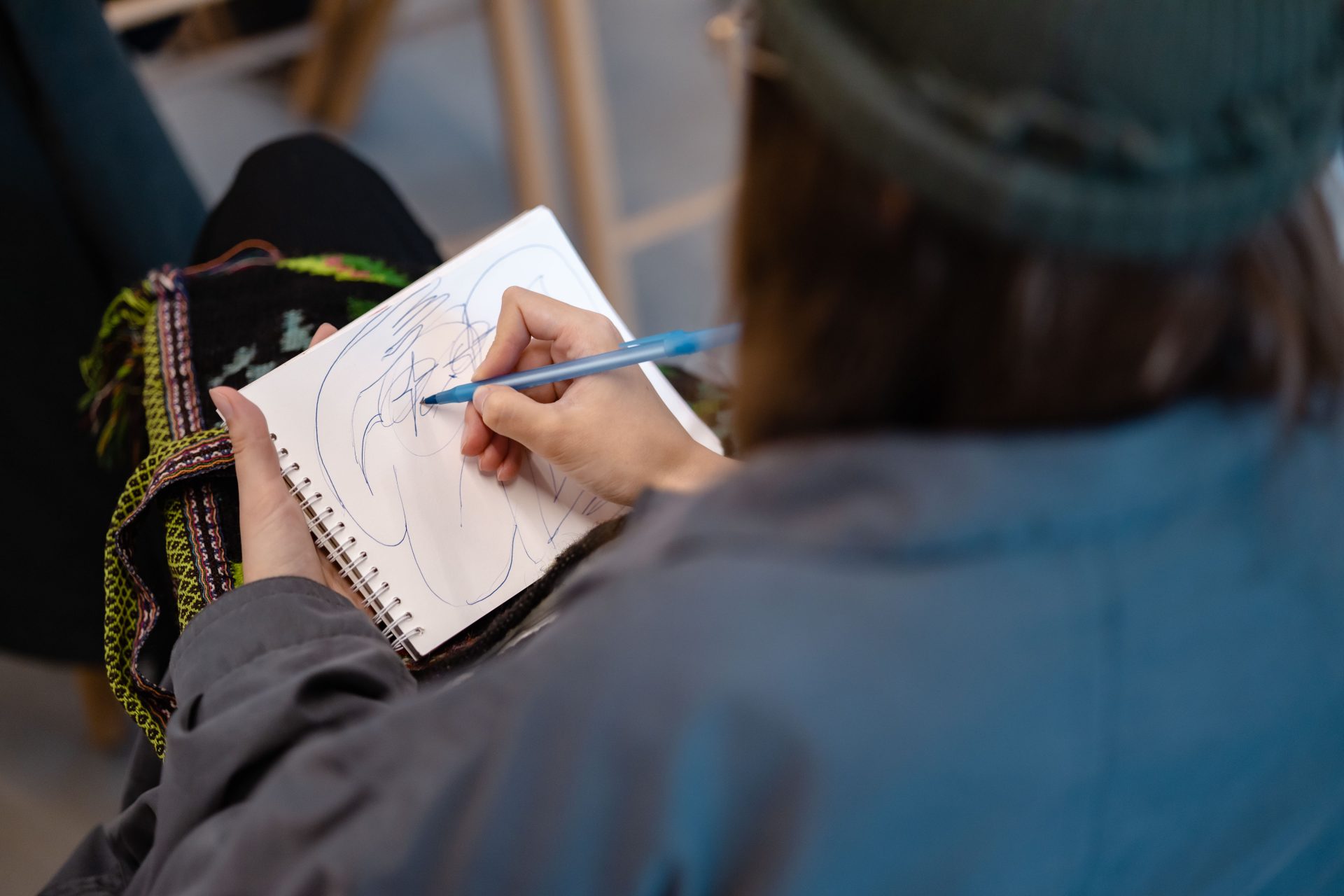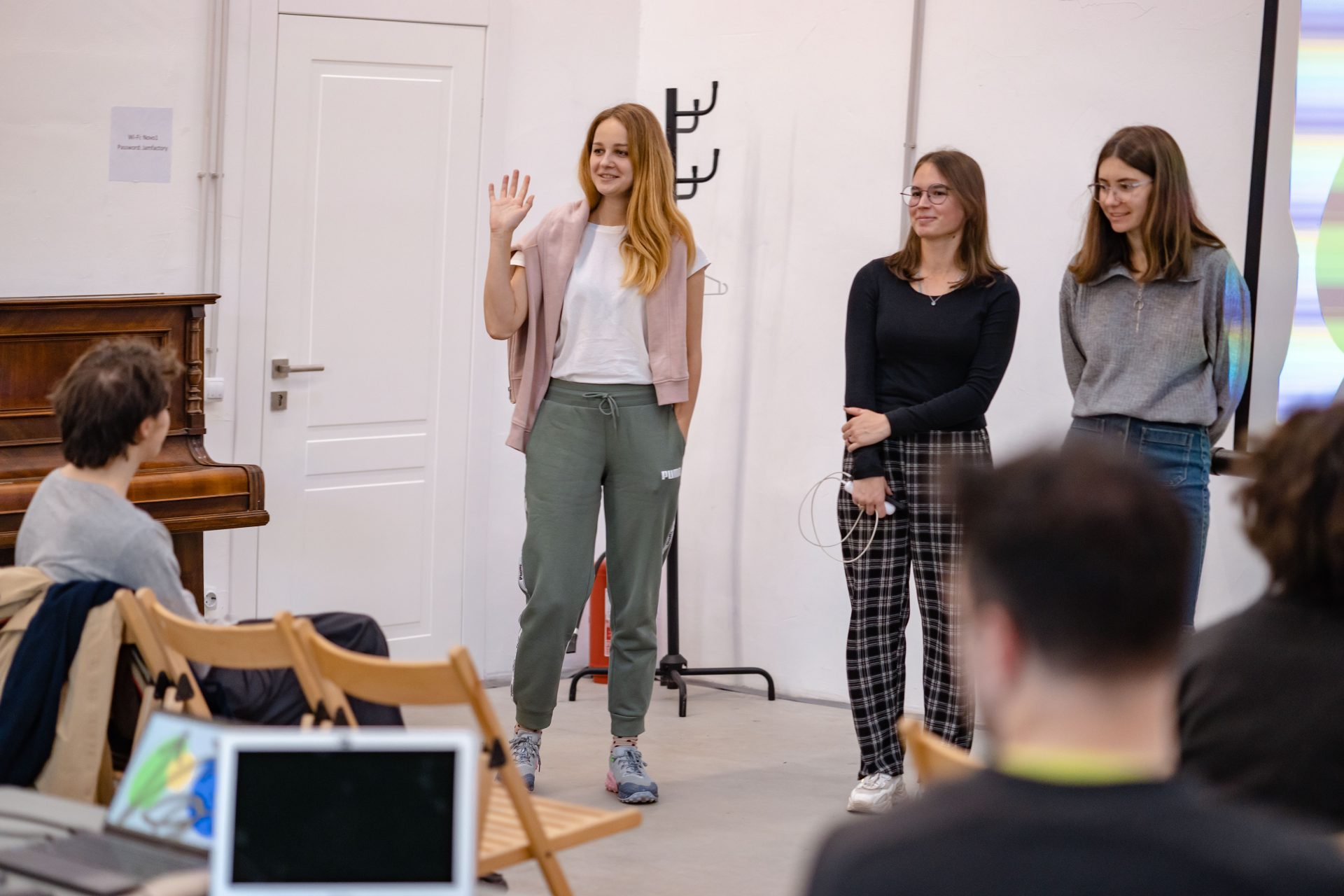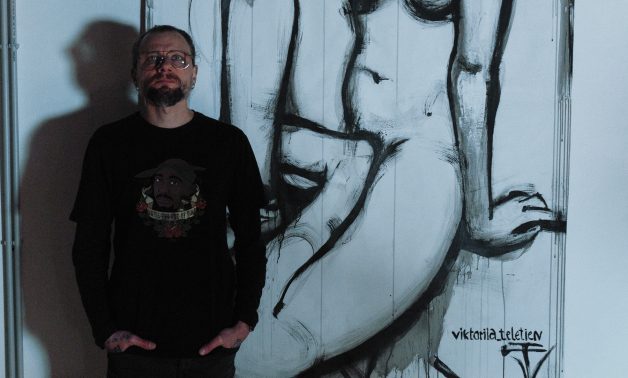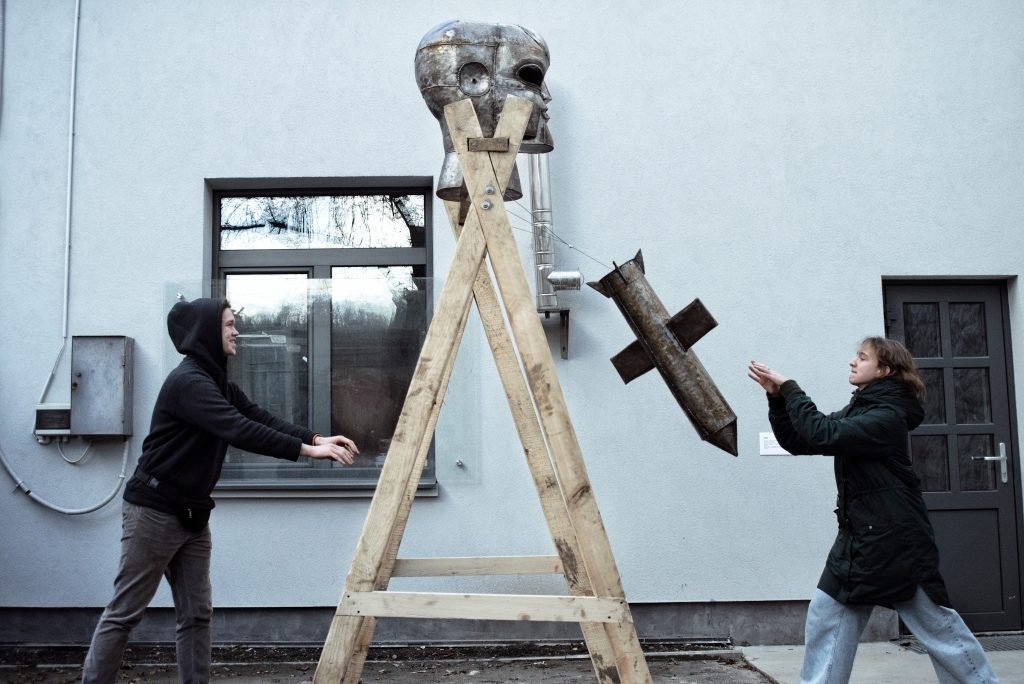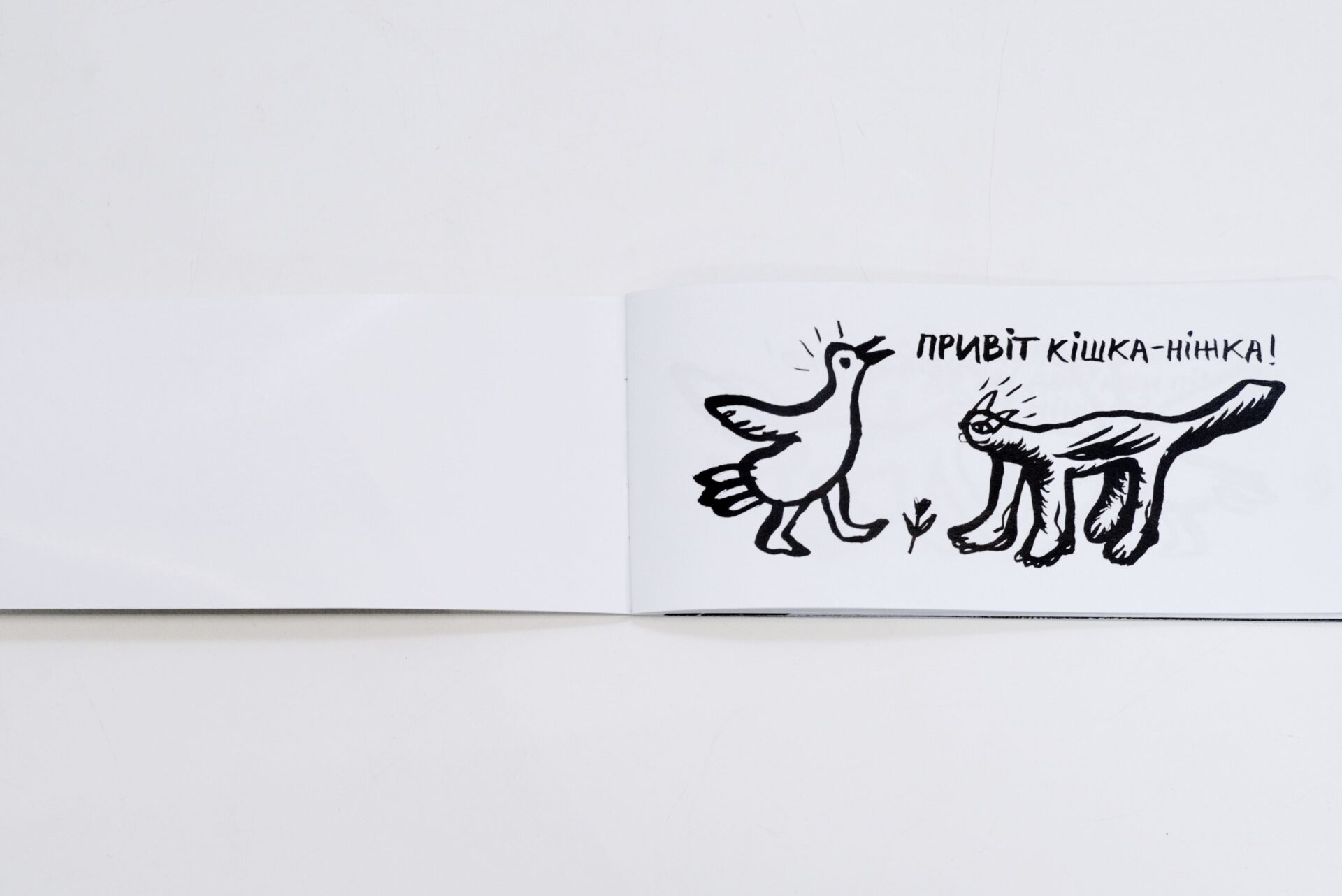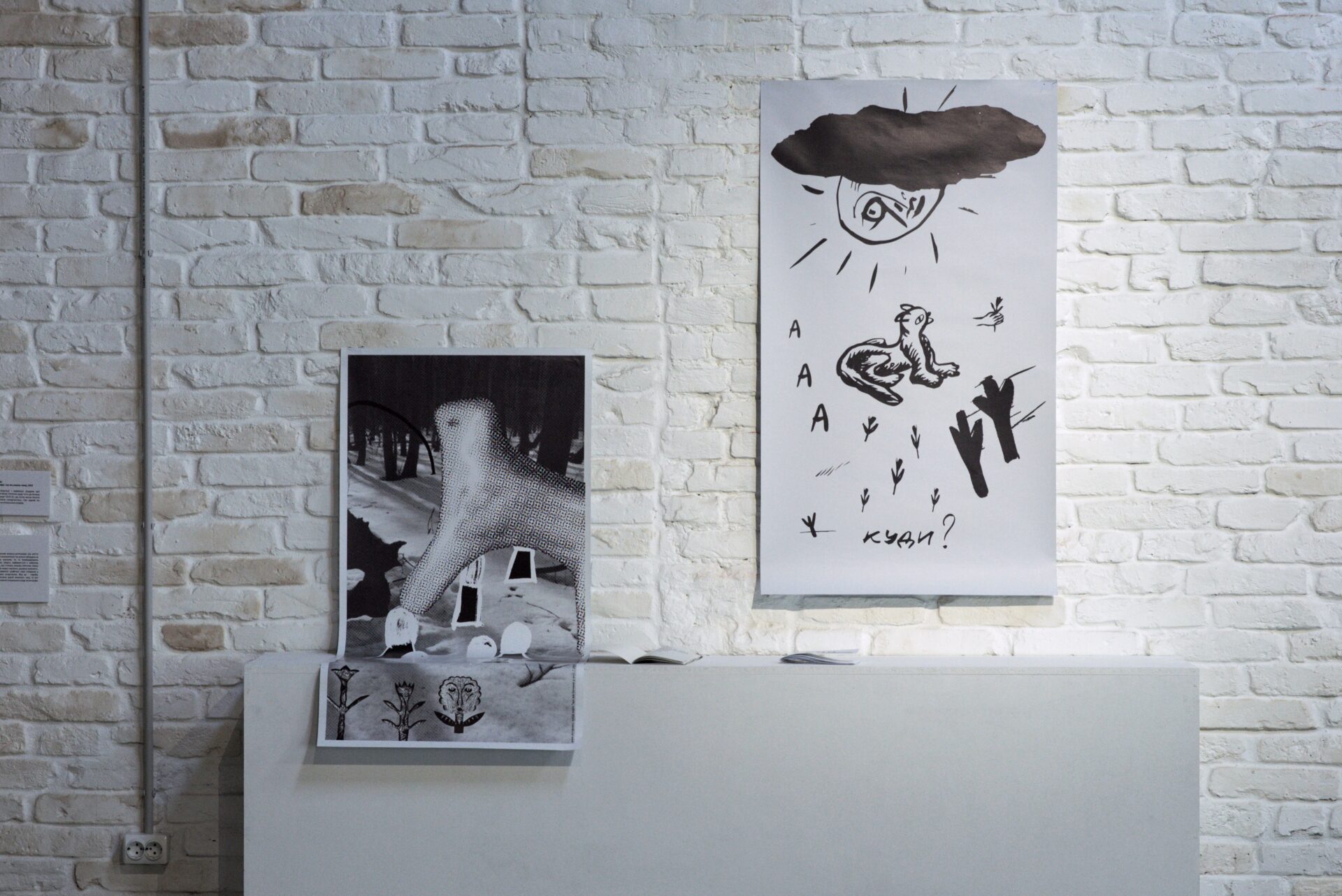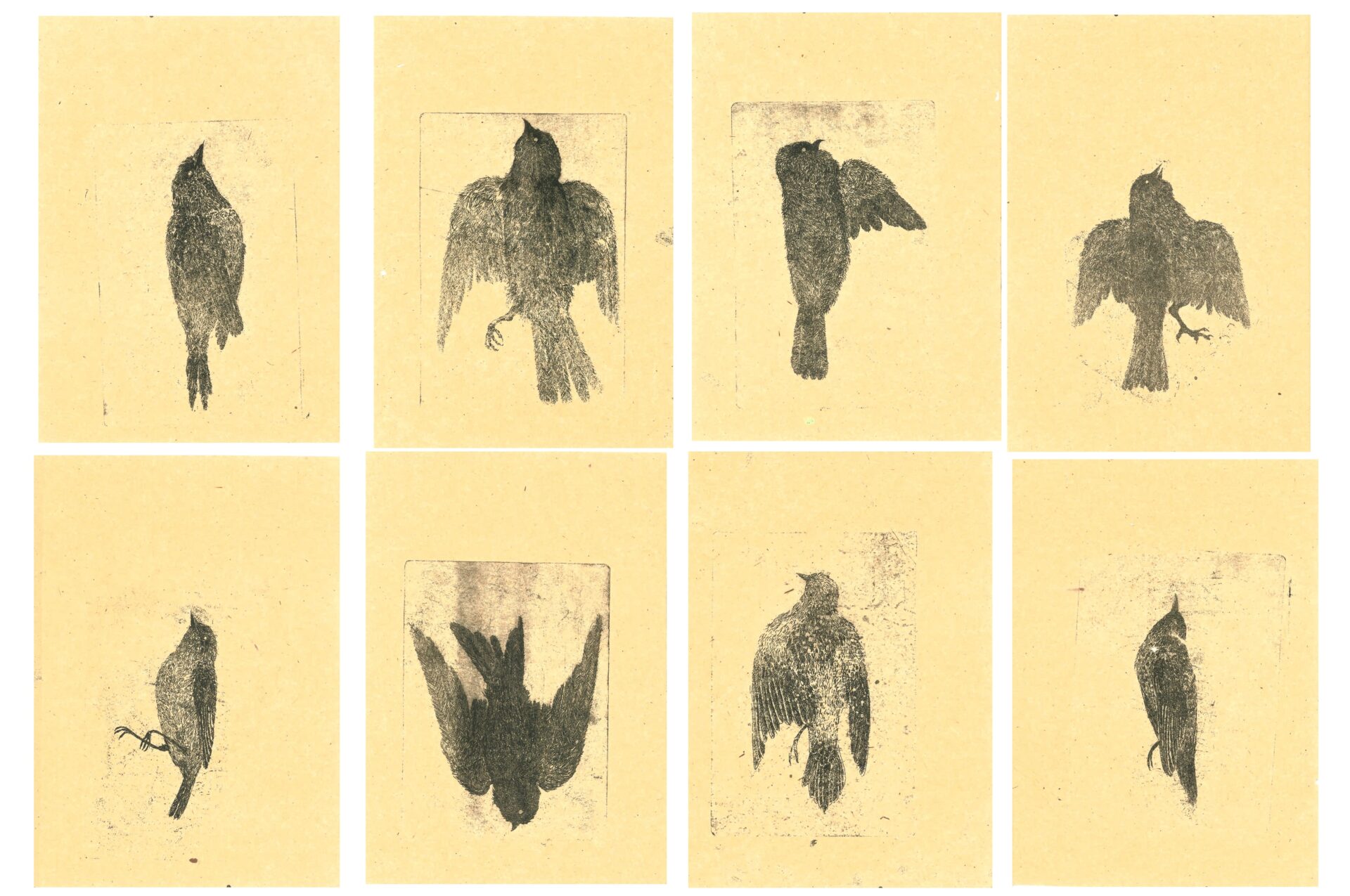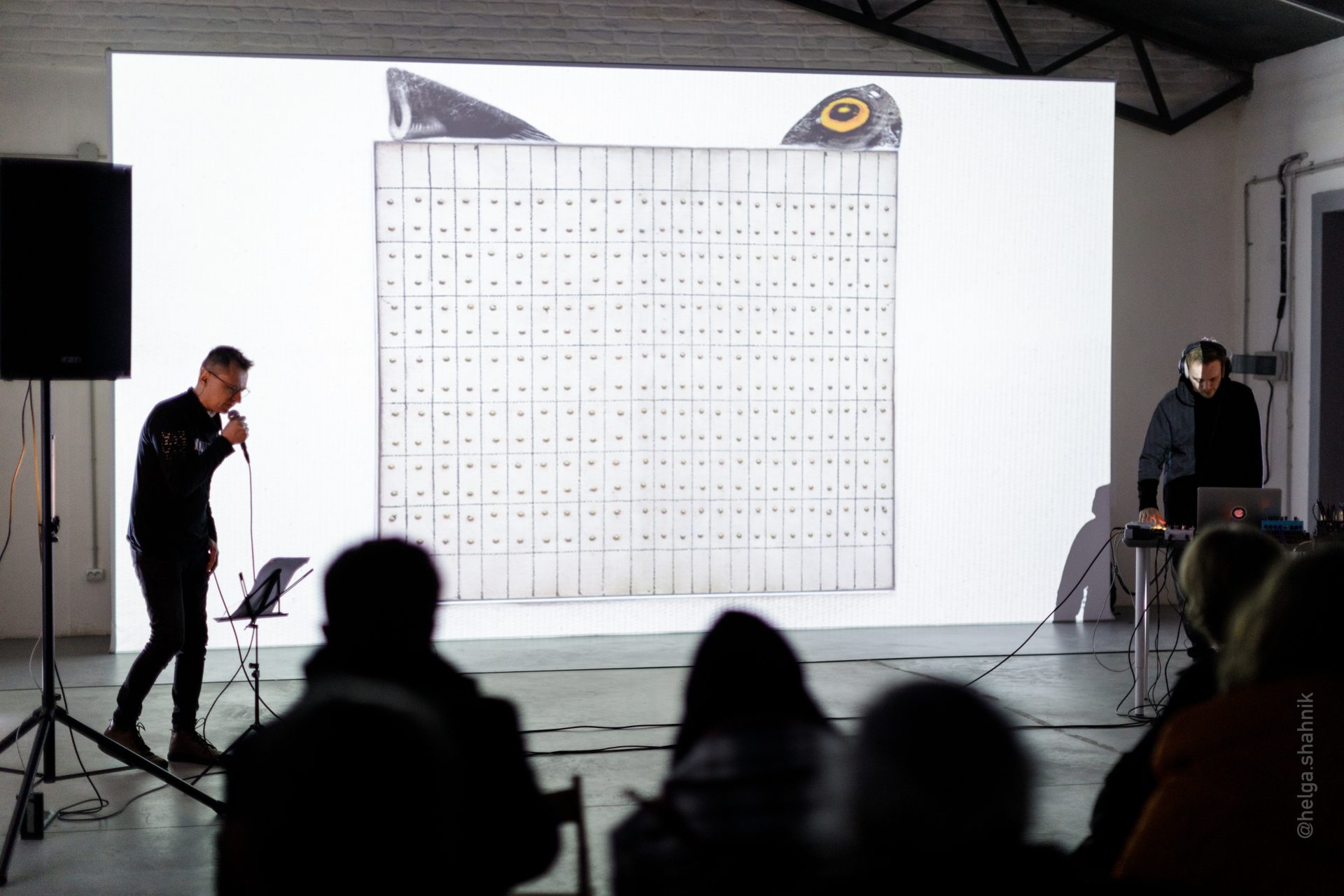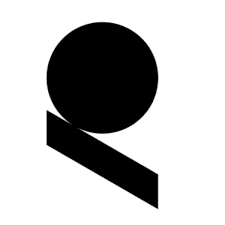| The “Navigation” program supported artists who were forced to move to Lviv due to the full-scale Russian invasion of Ukraine. We wanted to create conditions in which artists feel more confident in the new environment of the city, have a network of professional contacts, be able to present their projects to the already existing Jam Factory audience and the professional community of Lviv, continue or renew their artistic activity, start new projects, including ones in cooperation with local artists.
Artists participated in different events, which contributed to their integration into the cultural and artistic field of Lviv and professional development:
In addition, all course participants got access to the following types of support:
In addition, according to the internal competition, some participants received the following types of support:
Participants in 2022:Sofiia Avdeeva, Kharkiv The program was implemented with the financial support of the ZMIN Foundation, the Stabilisation Fund for Culture and Education 2022 of the German Federal Foreign Office, and the Goethe-Institut. |
Project Events
Open Call for artists
25-09-2022Lecture by Andrii Boyarov “Majaki”
2-11-2022Vitaliy Matukhno`s film “Beautiful Gusts of The Soul”
26-11-2022Eliza Mamardashvili’s performance “Remember Before Entering”
10-12-2022Multimedia performance “Emergency suitcase of records Dr.Bugg”
10-12-2022Card game “Flowers of memory” by Svitlana Kosheleva
20-12-2022Final exhibition of the “Navigation” program
22-12-2022Exhibition “Navigation 2022”
The exhibition of participants’ works resulted from the two-month Navigation program. Continuing their creative practices, uniting in collaboration, the participants created and introduced to the public view 11 artworks in graphic, painting, photography and video projects, sculpture and performance. Non-human creatures appear as guides of personal and painful stories: animals, birds, trees, and natural landscapes. They are telling us about worries, loss, and sorrow. Through them, an attempt to anticipate and predict great changes, danger, and tragedy is realized. The artists are searching for ways to remember, memorize, and take notes about their state at the beginning of the full-scale invasion in February 2022. Notes and sketches made in those first days became foundations for the represented in the exhibition projects: the reflection projects, projects as protective mechanisms, and coping methods. Along the process of coping with traumatizing experiences in them we see the tries to find places of calmness and experience new environments and communities through visual explorations. New emphases are placed on questions of collective memory and the politics of memory, the importance of documentation of experience, and ways of remembering. The participants of the Navigation 2022 exhibition offered the viewer the opportunity to walk with them through the path of personal archives of war from the moment of acknowledging the state of fear and anxiety to seeking liberation and restoration.
Artists and Works
Yurii Shtaida
Performer, comedian and musician from Kharkiv. He implements musical works in a style that he labeled as post lounge, uses a recorder and the Vermona analog synthesizer.
The artist also realizes himself in theatrical and musical projects as an actor and musician. He worked in the “Publicist” theater in Kharkiv.
Open session #4
action
Since 2014, the artist has been “collecting” works or fragments of Ukrainian artists’ works in the form of tattoos on his body. The process of creating a tattoo is always public and takes place as an action-session. In December 2022, the artist initiated “Open Session No. 4” — as a rethinking of his first tattoo, created as part of the “Autobiography” Open Group project.
“My autobiography was tattooed on my body in Russian. So I think it’s time to fix it,” comments the author. Having rejected the idea of a direct translation of the text into Ukrainian, the artist stops at the idea that it is necessary to go another way:
“It is impossible to translate your past life into another language. Because it has already happened. My history of the past will forever remain in Russian. This is the truth of life. The most important thing is that now and in the future my life will be Ukrainian. And I am sure of that.”
The author decides to use the text of the autobiography as simply the material on which he applies the graphic work. This drawing, completely unrelated to the content of the autobiography, also contrasts with the visual language — the light lines of the girl’s image on the typescript. The conflict between the conceptual and the figurative, between the past and the future. “It’s like a picture on a page in a book that you’ve read many times, you know by heart and you’re unlikely to go back to rereading it.”
Vladyslav Yudin
Artist from Kharkiv. He graduated from the sculpture department of the Kharkiv State Academy of Design and Arts. He studied at the Academy of Pottery in Opishne, where he began to study folk art and practices, which changed his view of his own creativity. Creates automatons from clay, ceramic sculptures and interactive toys. The author works with the topic of the demiurgic nature of man, the understanding of the environment and oneself. Works with sculpture, installation, light projections, sound. Co-founder of the inclusive project “Sculpting by touch”, where he teaches sculptures to visually impaired persons.
Relia
sculpture
“Someone is speaking war, someone is seeing war, someone is hearing war.
She speaks through a person, having different colors.”
Liliia Petrova
Artist from Kharkiv. A graduate of the Department of Graphics of the Kharkiv State Academy of Design and Arts, majoring in “Book Graphics”, she also studied at the Pottery Academy in Opishne. Works with graphics, illustration, graphic and verbal interaction, as well as with ceramics; studies the practices of folk art, cooperates with Ukrainian fashion brands, creates comics and zines. The immensity and absurdity of existence are among the themes that the artist outlines in her work. She creates her own graphic world where “faced with life’s problems, naive creatures experience trauma, get to know the world and ask themselves important questions.” Those “naive creatures” are animalistic and fantastic beings, the interweaving of the human body and consciousness with the sensuality and fragility of the plant world, which often appear as narrators of stories about experiences and traumatic experiences.
The baby animals
the comic
The first pilot copy of the comic tells about innocent small animals’ lives in the apocalypse context. This is a graphic story, rather absurd in its content, where something terrible, such as bombing, detonation on mines, maiming, or death, takes place in a naive universe, which is mostly filled with birds of song, kittens, colorful flowers, cute little feet, wide forest paths, sunshine, and fluffy clouds. But the fluffy white clouds become black stormy ones, and the wide paths disappear. The comic continues the artist’s graphic series of the same name, created in the first months after the full-scale Russian invasion of Ukraine. For the artist, all this is an attempt, “enveloped” in imagery, to comprehend the realities and horrors of wartime and a protective mechanism against the unceasing visual series of catastrophes through its fixation on paper.
Liliia Petrova, Vladyslav Yudin
What we saw in the forest the day before, and what we know now
zine
The zine contains visual and verbal reflections on a forcibly abandoned secret place. Notes about what the authors saw while walking through the forest in Kharkiv on February 23, 2022, what they could only see later, and what they saw on the way back. The native forest will be dangerous for walks for several years to come.
Yevhen Korshunov
Artist from Brovary, Kyiv region. At the heart of his creative method is work with local history, absurdity, and myth creation. Among the media he works are painting, drawing, and video art. The images created by the artist combine conceptual beginnings and subtle irony, turning the routine into the absurd.
Disturbing images
a series of paintings
The painting series is based on photographs and graphic works with charcoal, which the author made at the beginning of the full-scale Russian invasion of Ukraine. Everyday things are depicted on them, which, according to the artist’s observation, began to cause anxiety and sadness with the beginning of active military operations. It is mostly about elements of the landscape: a waterfall, trees, bushes, and concrete structures, which, despite the great distance from the place of active hostilities, still reminded him of the war. “I also noticed one strange thing: the pole signs that marked The Podil way of St. Jacob the locals (they saw these many times before) now treated them as enemy markings or mine warnings,” – shares the artist.
Oleksandr Kuchynskyi
An artist whose hometown is Severodonetsk. He studied in Luhansk and Kyiv as a designer and illustrator. He is interested in the history of Donbas; his practice is connected with the industrial heritage of eastern Ukraine and the life of people among industrial giants. The artist participated in expeditions to abandoned industrial zones, exploring the infrastructure of monofunctional cities, particularly his native Severodonetsk. Works with such media as painting, photography, and collage.
Inevitability
a series of paintings
The basis of the project was the painting series “Greyness” – about typical Soviet buildings and their influence on people’s lives and tastes, on which the artist worked before the full-scale invasion of Russia into Ukraine. The reflection about the relocation and war became the continuation of the series. Many neighborhoods, and sometimes entire cities, were destroyed by the Russians during the assaults. In the new series, panel houses or their ruins become only a background for events that, according to the artist, could not be avoided. A child leaving their home, clutching their cat, eruptions due to artillery duels in the fields near Lysychansk, falcons that returned home and organized a hunt for the invaders. The project combines the realistic with the abstract and metaphorical. The smallest of the canvases, which depicts a broken Russian armored vehicle, scorched by the fire, cooling down in the field, is an homage to Malevich’s work “The Red Cavalry Rides”.
Katia Drozd
An artist from the city of Bakhmut. She studied at the Kharkiv State Academy of Design and Arts. The artist’s practice is focused on visual studies of places and social groups. Works with photos, videos, graphics, and memes. In the search for the identity of the place, she uses approaches based on her experience in graphic and branding design: “I am incredibly interested in searching for the newest Ukrainian identity. The following components are important to me: a man, irony, consciousness, search, aesthetics.”
The artist works in the media “Hatch” and is engaged in the print magazine about local culture “PlusMinusInfinity”.
I won’t be walking through the forests of Kharkiv soon
video
In the video work, the author collects visual images of the forest as a place expected to provide a sense of security. The artist calls the forest a sacred place, a safe place to share feelings and experiences with loved ones. Moving to Lviv, she tries to find a similar place, and these searches are recorded in video sketches and text.
“All the time, I think about how my Kharkiv is keeping. With its mined ground, with pieces of enemies bodies and fragments of missiles. It seems that this land will be mutilated for tens of years. Such a fate has befallen the forests of Donbas since 2014,” the author adds.
Eliza Mamardashvili
Artist from Kharkiv, born in Zaporizhzhia. She explores individual and collective traces of life in her artistic practice, demonstrating their properties: imperceptibility and tangibility, fragility and strength, through poetic, melancholic, and compelling images. Works with themes of memory, pathways, markers of presence, and trauma. “All signs, codes, and allusions contained in them have their sources in my Georgian-Ukrainian origin. I focus on the idea of doing something between the visible and the invisible, in the plane of guides revealed through objects, people, memories, among which we live and with which we encounter and which lead to the ritualization of actions.”
The basis of the author’s artistic practice consists of a performance, an object, an installation, and a drawing. In the works, materials play an extremely important role: clay, fabric, paper, gesture, word, sound, which are very close to a person and their life. The artist considers them a basis for understanding very simple things that surround us as imperceptible small gestures.
Remember before entering
performance
A clay jar, a bucket of water, a bell, fabric painted with ink and sewn from pieces with a continuous simple surgical seam (the wrap one).
“The story that happened to me in Georgia formed the basis of my thoughts on forgetting.
My aunt Zhuzhuna had ten cows. One day, one of them, Lamazi, a beautiful pregnant animal, disappeared. For three days we searched for the lost cow. Every evening we got into the car and searched all over Meskheti.
This mystique, formed in the search, revealed for me the wound of my all that was lost. My wound of everything that is forgotten.
Lamazi’s bell around her neck, as a marker of presence and existence, did not help her find herself.
She forgot. Simple things that she did every day.
She forgot. The place where she is from.
Something prevented her from remembering her house, her walls.
Eliza Mamardashvili
While you were killing the tree
installation
An installation consisting of a ballpoint pen drawing on fabric sewn with a continuous surgical suture and the recorded sound of creaking trees. The artist gathers together the images of trees – two walnuts and a pear, which are important as memorabilia for her and her family. The trees planted by her father during Eliza’s childhood, the trees of her father’s own childhood – they connect the important and vulnerable periods of the family’s life.
“The sound of creaking trees. On the eve of the war, when Mary and I were walking in the forest, we found a large area of fallen trees in the botanical garden in Kharkiv – then I really heard how they could creak and talk.
Inside, everything is cracking.
The loss of what was considered an indestructible monolith of the city’s collective history and memory.
Majestic living or dead artifacts that can be uprooted so easily
by people
Killed, torn apart. They are witnesses. Quiet, silent.
No actions, no words, only observation.
A dead tree, which knew how to stand straight, firmly, with its roots in the ground, became a shadow, became
a memory
This creak is with me every day now.”
Olena Modryk
Artist from Kharkiv. Graduated from the Kharkiv State Academy of Design and Arts with a major in book illustration. Works with photography, installation, objects, plays, playback theater, and performance. The main themes of the works are home and its absence, documentation of reality, and legends.
Things to disappear
a series of photograms
The work consists of a series of photogram images obtained by the photochemical method without using a camera. One of the features of this technique is its ephemerality and unpredictability; the image can last from a few days to tens of years. The artist collects silhouette images of things found by her and her friends during travels or at a new residence but which remind her of home. Among the things: a collection of sticks and dried flowers, husks of cockroaches from the Kyiv communal house, hair, a paper doll of the sun, and keys to all the places where the artist used to live.
Svitlana Koshelieva
The artist comes from the city of Khrustalnyi, in the Luhansk region (until 2016, Krasnyi Luch). In 2014, when Russia began the war against Ukraine, she transferred from the Luhansk College of Arts to the Kharkiv Art School, then studied at the Kharkiv State Academy of Design and Arts. She works with graphics, photography, performance and land art. It’s important to Svitlana to give the viewer freedom for his own interpretation and reflection, without limiting him to a prescriptive outline of the theme of the works. “I want my creativity to be a space for sensations and new experiences more than for definitions and words,” comments the author.
3-70-34
board game, zine
This project began as a graphic series in the summer of 2021, when Svitlana, taking an interest in the history of her home district, started making a textual description of images and drawings of her native city, comparing its images from different historical periods with her own memories. Eventually, noticing the interrelationships between pictures and records, the artist collects them into a story and creates two zines: textual and visual. Later, based on the visual part, the board game “Flowers of Memory” was created as a component of the 3-70-34 project.
The game was presented as an event of the “Navigation” program at the Jam Factory Art Center: participants were offered 34 cards with different graphic images, united by one visual language, and some elements of the images were repeated. One by one, the players put their cards on the table, trying to continue the image and story of the other. The stories came out rapidly and were somewhat apocalyptic; sometimes, developing two or more storylines simultaneously was possible.
Eduard Balula
Artist from Kharkiv. A graduate of the Kharkiv State Academy of Design and Arts. Media with which he works: graphics, drawing, etching. His artistic practice is built around such themes as trauma, memory, and migration; the artist focuses on the physiological experience of the body, which he intertwines and combines with the landscape into a single organism. The overarching theme of his works is metamorphosis (transformation), which expresses uncertainty and the impossibility of permanence and stability. The artist himself explains his medium choice: “Paper, thin and fragile, like the human body. The figure, the field of free thought. The etching, the space of chance.”
The red sun rising
graphic series
This series of graphic works is a reaction to the full-scale Russian invasion of Ukraine. The first drawings were made in a notebook the second week after the evacuation from Kharkiv to Lviv and became the only way to describe what was happening. The works focus on the physiological feeling of war, hence the main elements of all works are anthropomorphic creatures whose shapes vaguely resemble human stomachs. Previously, the “stomach” appeared in the author’s series of works “Causes and Consequences of Ignition” – about the premonition of war and constant anxiety about it. “Anxiety itself is inextricably associated with a feeling in the belly that seems to turn you inside out,” says the artist. In the new series, which is no longer a premonition of war but a reaction to it, stomach-like forms metamorphose and merge with other elements, further emphasizing the state of instability and anxiety.
Mariia Bohomolova
The artist is from Kharkiv. She studied at the Kharkiv State Academy of Design and Arts. An important component of the author’s artistic practice is the study of materials that become an integral part of her graphic works. Most of them are plants, cloth, and things invented through a combination of human labor and natural resources. The material becomes an active participant in the work and forms a new context for understanding the work.
For the artist, the issue of human interaction with the surrounding world is key. As the artist says, “it grows out of impressions formed in childhood and looks for an answer in imperceptible things and events that surround us. It is possible to record only a small part of their manifestations.”
No title
dyed fabric
The author creates a series of animal images on fabric, which she dyes with her own vegetable dyes, using marigolds and acorns.
Along with martial law, the state of alienation became Mariia’s constant companion, and was a defense mechanism against what the environment was broadcasting. But the new reality was gradually becoming the norm, and the feeling of being lost was compounded by a desire to understand and embrace this new landscape and the many other living things that make it up.
So the artist began to think about the likely invisible stories around, the main characters of which were always animals. The impossibility of being aware of each of your actions is what debunks the myth of human uniqueness over animals. The mythical story of the centipede with a thousand legs fits perfectly here: when asked how it moves each leg, it started pondering and therefore stopped, becoming paralyzed.
“Like other living beings, we create ourselves in the environment, constantly changing. Every small unconscious action leaves an imprint on us and our landscape, combining into many stories. For me, animals in this project become guides of stories. Like the story of a dog, a resident of a sanatorium, who was blown up by a mine. Like a lone dog running away from the Polish border at night. Most of the stories take place at night and where it is forbidden or simply dangerous for a civilian to be.”
Mariia Bohomolova, Eduard Balula
Kraj
365 graphic images formed into a tear-off calendar
Kraj does not have a clear form, it is not the characteristic of it from the very beginning. Kraj is similar to a roar, an attempt to scream in a dream. If we could hear the soil, it would sound like Kraj.
Kraj is a land, a landscape of wild fields, forests, and steppes. It reminds of the sounds of birds, the bird itself.
Each bird, its color, size, beak length, can tell a lot about the environment in which it dwelled.
Kraj are needle cuts on metal. Scratching a drawing on a brass board, etching it in acid, applying paint on the affected areas, we get a print that is a fixation of a moment, a fixation of time.
The time is fixed in the form of a calendar. Each sheet is a reflection of the previous day. Peeling back the sheet, we also see a torn Kraj.
Sofiia Avdieieva
Artist from Kharkiv, works with book and printed graphics: etching, lithography, linocut; also involved with photography, lettering, animation and multimedia practices in general. She’s deeply immersed in the area of book graphics/book image, art book, interactive book.
The artist describes her approach in her work as follows: “Following visual and semantic coincidences, emphasizing them and not interfering with them. I systematically collect random moments during my travels through cities and landscapes: photos, videos, scans of flora textures. I gradually process this archive and from these “existing” materials generate “illusory” spaces for new projects, sometimes somewhat romanticizing the materials of reality.”
An emergency suitcase of Dr. Bugg records
multimedia performance
sound: Doctor Bugg (Pavlo Lisovskyi)
visual design: Sofiia Avdieieva
The project was created in collaboration with Sofia Avdieieva and Pavlo Lisovskyi and was presented to the audience during the “Navigation” program in the Jam Factory Art Center. The authors conceive multimedia performance as an intellectual poetic-musical material that will become an impetus for reflections on the new everyday life. Synthetic action consists of songs and animated covers for them. “Each song is like a golden stag beetle or a bright firefly that crawled out or flew into the background of today’s military reality during another blackout,” say the artists. The visual design is presented through the allegorical image of an “emergency case of vinyl records.” According to the authors of the project, the vinyl record is as archaic as the war in the 21st century, but both have become relevant again today.
Yurii Holik
Curator, art manager, photographer from Kharkiv. He is studying at the Kharkiv Academy of Design and Arts, majoring in “art history and theory”. In 2021 he initiated the independent platform PATIO for the creative youth of Kharkiv. He studies photography at MYPH School of Conceptual Photography. In his photographs and collages, he addresses the themes of sublimation, the subconscious in art, combining academic research and artistic practices. In 2022, he wrote a term paper on the use of iconographic subjects in modern Ukrainian photography and conceptualized it practically in the “You’re an Icon now” series.
Mykhailo Zubchaninov
Born in Georgia, in Tbilisi, raised in Ukraine, in the Zaporizhzhia region. Student of the Kharkiv State Academy of Design and Arts. In his works, through photographic series, he highlights such topics as the relationship “man – man”, “man – nature”, “man – society”.
You are an Icon now
a series of photographs
The idea to create a series of photographs appeared upon arrival in Lviv. In contrast to Kharkiv, in Galicia religion has a great influence on everyday life, so in this project the authors study the local environment and its peculiarities.
Ukrainian icon painting traditions became the main source of inspiration. The artists created 5 portrait images that refer to the Ukrainian Baroque era. The models were young people of the so-called Generation Z. For the authors, this is an attempt to create a dialogue between modern culture and Ukrainian heritage, a study of urban culture and its roots, as well as a new vision of sacred motifs.
The paintings: St. Sebastian, Mark the Evangelist, Virgin Mary, Jesus Christ, and St. Lucia.
PROJECT TEAM






